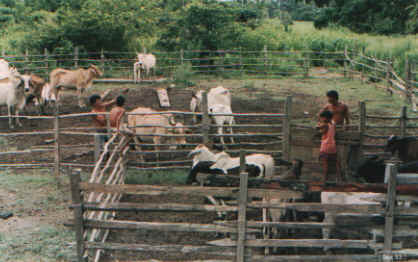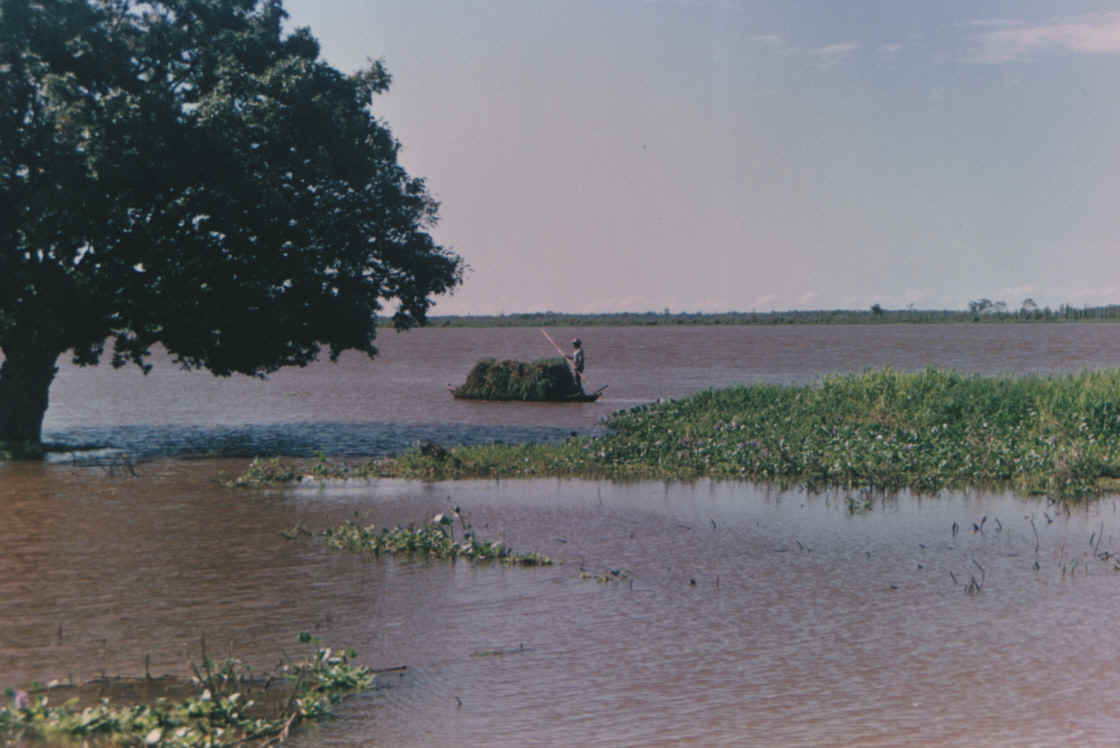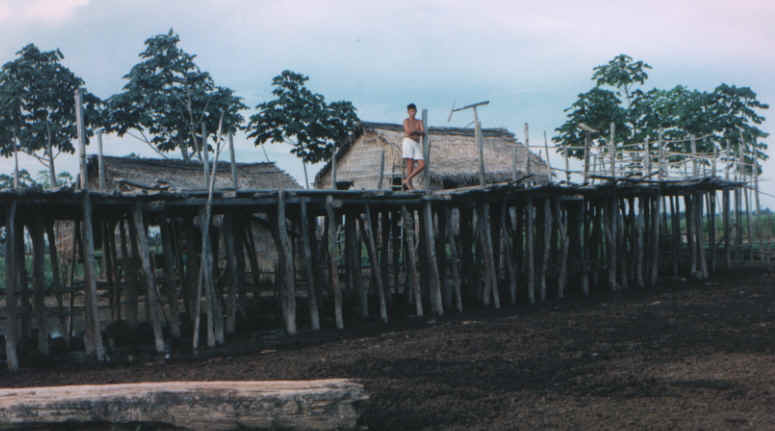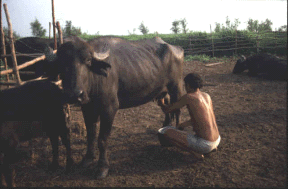 (Left: a typical corral, one area for calves and a larger one for fully grown adults)
(Left: a typical corral, one area for calves and a larger one for fully grown adults)Cattle were introduced by the Portuguese in the 17th century. According one book there were 480,000 headsof cattle in 1786 on the island of Marajó, at the mouth of the Amazon. Until the end of the 18th century ranches were under the control of the Jesuits. In 1795, the religious order was expelled and all farms were put under government control. In 1895, following the abolition of the monarchy there were all sold off to private owners. Livestock raising over in the riverine areas of the Amazon has been generalised for 200 years.
These are important points, since most research on cattle raising has focused on recently occupied frontier areas in the south of Pará state. Here there has been large scale deforestation as a result of people clearing land in order to receive tax breaks in the 1970s and 1980s and keep cattle. For more information you can read work by Susannah Hecht (see for example Fate of the Forest).
 (Left: a typical corral, one area for calves and a larger one for fully grown adults)
(Left: a typical corral, one area for calves and a larger one for fully grown adults)
I want to concentrate on floodplain practices. In the lower and middle Amazon there are some very large ranches with over a thousand heads on some farms. There are also many small-scale heards from a few to a hundred. These are owned by people who a have diversity of economic activities and cattle raising is a secure form of investment. A much better investment than putting money in a bank. What is more they are labour extensive in the dry season when there are big demands on work-time, provide milk and meat.
Large scale cattle ranching is environmentally destructive. Trees have been chopped down and the fields get trampled on and ruined. Many trees on the floodplain provide nuts and berries for fish to eat in the floodtime. Taking away this source of food means fish go elsewhere (or drop in numbers) and thus are more difficult to catch. Conflicts between neighbours arise when cattle ruin fields and break fences.
Traditionally cattle raising on the floodplain has been about the provision of meat for local and urban consumption. Today this is still important, but with high inflation, people have turned to raising cattle as a form of investment, poupança, a sort of bank to store money. If cattle are looked after well the herd grows in size and thus accumulates in potential value. Thus, as the herd grows and money needed, individual cattle are sold without compromising the size of the herd. One live cattle weighing about one hundred and sixty kilos might fetch up to two hundred and fifty US dollars (250 US$).
The milk based products derived from cattle are an important part of the diet and systems of sharing between houses. During the dry season cows are milked every day or so and each cow may give half to one litre of milk. This milk is then shared between kin and neighbours. Cheese is also made from milk, though this is normally done on special occasions and given to guests who turn up at the house. The slaughtering of cattle on special occasions, such as Christmas and birthdays, is also an important aspect. The meat is either given away or cooked and everybody of invited to eat at the home of the owner of cattle. Giving away of meat at Christmas and birthdays acts as an important expression of the mutuality on a community level. 
(Right: transporting grass in the wet season to the morumba.)
During the dry season, cattle roam around freely. Fences are built by those who have crops in order to protect them from cattle eating the plants. Cattle entering gardens is a source of conflict between locals. There are no grazing rights, or specific places where cattle can graze. Fences are not built to keep cattle in rather to keep them out of a place. On the third timean animal breaks down a fence the owner of the garden has the right to kill the animal and receive a half share of the meat.
An event which is rarely discussed by ethnographers in the cattle raising calendar is the branding session, a ferra. This event involves much talk and excitement before hand and occurs at the very end of the dry season, February/ March. It should be planned to coincide with nothing else since it is best that as many people, especially men come along. The event occurs when the owner of the cattle feels enough young cattle have been born to merit such generous and relatively costly hospitality- copious amounts of food and alcohol is provided. The young calves need to branded in order to distinguish them from other herds, thereby avoiding disputes. Essentially the ferra is a masculine event where men (mostly young) can show off their strength and ability. It is watched by everybody cheering on the antics. 
(Left: a morumba)
As then river rises cattle get squeezed onto smaller areas of land. When the water covers the whole floodplain they are either put onto raised platforms knows as morumbas or transported to the upland areas on barge type boats. Cattle are said to gain much weight in the dry season but lose some during the wet season, though they lose less if they are moved to the uplands. Raised platforms protect the animals from piranhas, snakes and sting rays. They are normally the option for smaller herds and those without access or partners who take their cattle to the uplands. These morumbas are built of a hard wood and may last a few years. Grass has to be brought daily to the cattle, which is time consuming . This is done by people in canoes who cut grass at the side of the rivers and then take it in the canoe to the morumba for the cattle to eat.
(Below: a buffalo being milked)